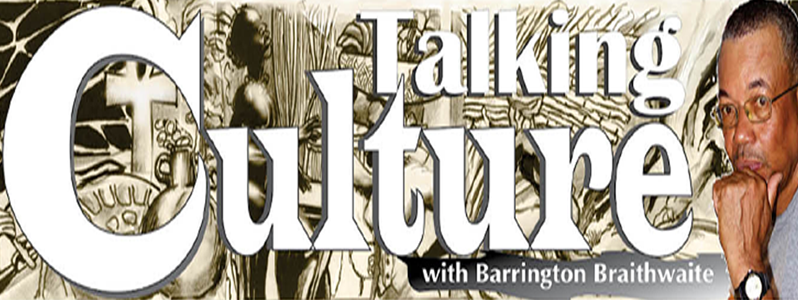–to the Land of the Jaguar
ACCLAIMED actress Letitia Wright visited her ‘birth land’, Guyana, and humbly outpoured her honesty of the makings of a star on the world stage of the cultural industries of Film and Theatre.
I was comfortable and pleased with her expressions of hard work and persistence upon recognising the innate talents that drew her to the Performing Arts. I was also happy that she had migrated to a country that would allow her talents to be nurtured, expand and attain the esteemed level to be celebrated for excellence, or, as I would interpret it, being the shining one who stepped out of the ‘Rainforest’.
Her visit and what this young woman expressed to us, coupled with, above all, the inspiration that emanated through ‘The being of her achievements so far’ has brought a glimpse of a world stage that remains a fleeting but not hopeless quest for those of us still embattled in the creative fields at home.
There is no doubt that her frankness would have transferred an even more intrepid dedication towards success, through a deeper understanding of what is required in the fields of the ‘Cultural Industries’, a trillion-dollar business that is no less as ruthless as any other area of a profit-making enterprise. But this is not selling merchandise that requires you to be an agent or possess a franchise, or can instead be an able merchant with a reliable turnover, once a dependable account is made due to suppliers. The Cultural Industries still have much more to their credit, because their products are among the oldest in human trade; they have always required levels of excellence and laws of protection. To attempt, without permission, in the ancient world, to trade in building designs, maps, and religious figurines to other nations could have cost the most brutal execution of such a transgressor.
Wars were fought for religious statues, negotiations conducted and traditional enmity entrenched for items. For example, the removal of the Quadriga from the top of the Brandenburg Gate by Napoleon, who took it to Paris, entrenched malice between those nations up to the end of WWII. Likewise, the then British governor of the Ashanti nation demanded the Golden Stool as an admission of their submission to British rule. His request declared the final war with the Ashantis. This is where the value of sacred symbolism merges with what we today conclude as Cultural Industries.
ORIGINS OF THE BLACK PANTHER
Two important bits of information that are necessary to be aware of are the origins of the Black Panther’s character, and the world it was enveloped in. The Black Panther, as a graphic storytelling character, did not originate in the book of the same name, but as a part of the Fantastic Four superhero team in the mid-1960s, which was published by Marvel Comics and owned by Stan Lee, and initially founded by Martin Goodman under the name, Timely Comics, in 1939.
By the time my little crew became aware of its existence, it was in the early 1970s. We were hooked on Commando, Batman, and, of course, the daily ‘comic strips’. But, in retrospect, learning from copies exchanged at book stands that included the early Black Panther, it was a story of colonisation. Thus, its subliminal relevance came over clearly, as friends and relatives from North America also added the urban mystique of the real-life ‘Black Panther Party for Self- Defense’, which was founded in the US in 1966 in Oakland, California. The names of the founders would be part of our reference influence forever: Huey Newton, Bobby Seale, and Eldridge Cleaver, the latter, whose book, ‘SOUL ON ICE’, I would recommend to anyone interested in the Civil Rights struggle across borders and continents. I did, while in New York City on an occasional visit to Midtown Comics, come upon ‘BLACK PANTHER’ in his own-‘Direct Edition’. This was in 1998. I bought the November and December issues and headed for home.
From where I stood, being present as a witness to the events of Ms. Letitia Michelle Wright’s visit was the University of Guyana’s page of that event. The conferral of the Honourary Doctor of Arts and Letters is described as an ‘Extraordinary Convocation’. My highlights were the incredible rendition of the hymn, ‘How Great Thou Art’ on the programme, which I had immediately ascribed to so many funerals, but that accustomed influence was quickly overshadowed by the rendition by Madam Oselyn Rose of the Faculty of Social Sciences, deserving a standing ovation. Any residue of expected boredom was evicted next by AL Creighton’s citation on the Conferral of the ‘Honourary Degree’ that was an expression of the ‘Art of language’ and itself merited another standing ovation. Next came the Acceptance Speech: The further learning clarification of an inspiring journey, by the now Dr. Letitia Wright. Following this, came to a warning of concluding the ceremony by the Vice-Chancellor, as a pressing next event demanded.
This visit was necessary, a relief in many ways, and is expected to offer some clarity and guidance towards the necessary excellence and the state of awareness that must accompany the journey through the ‘inner and outer’ shadowed wild forest of depression, predators, and mirages, towards purpose fulfilled. Thanks to this gifted member of the ‘Guyanese’ Wright family, I presume the ancestors are well pleased.



.jpg)










